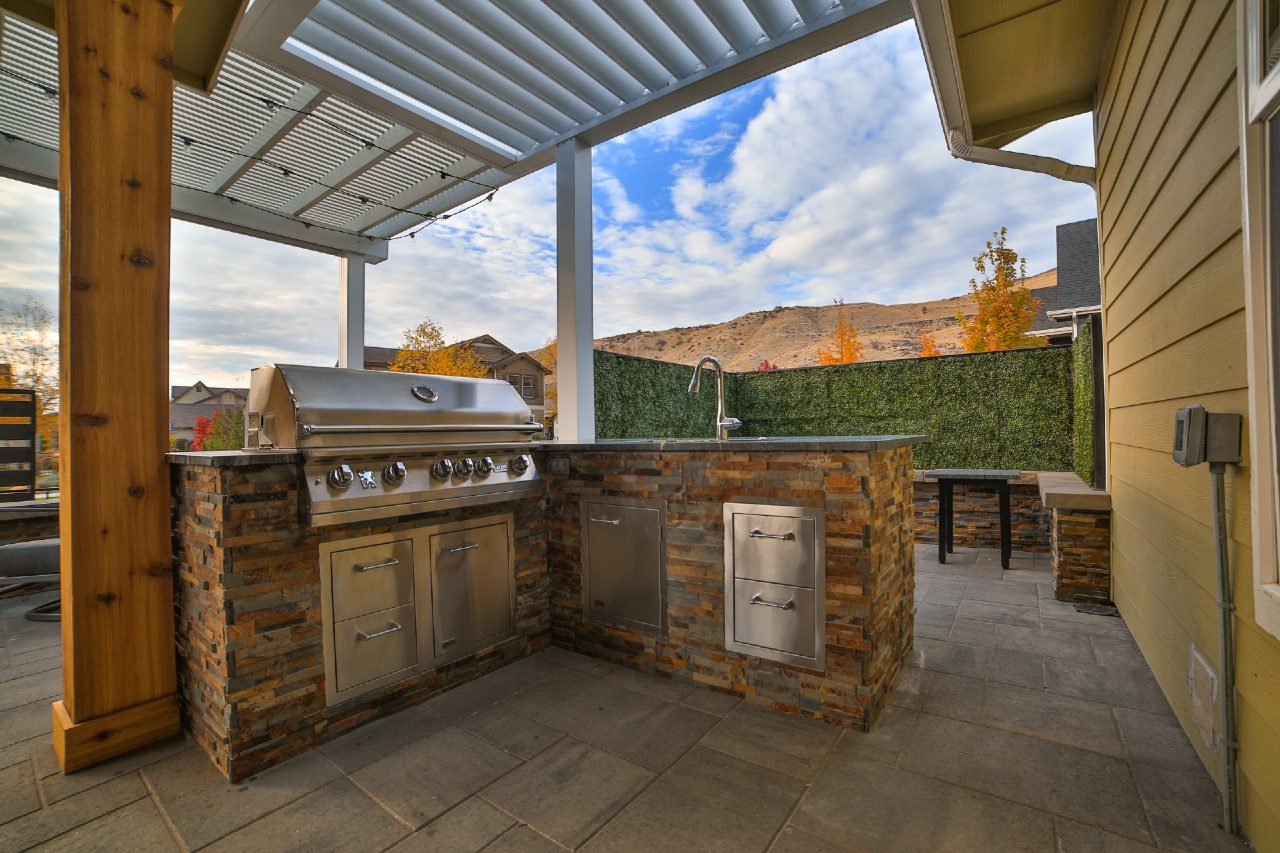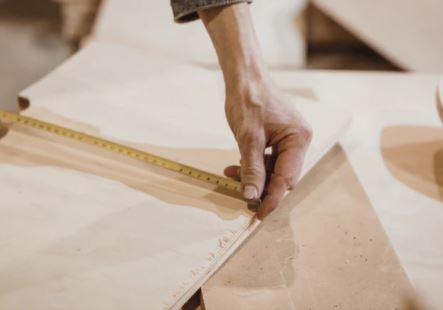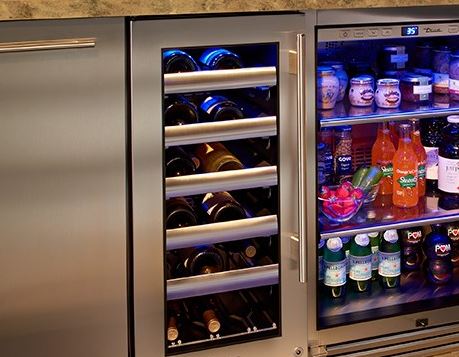What to Consider when Building an Outdoor Kitchen Island?
18 Things to Think About When Building an Outdoor Kitchen Island
An outdoor kitchen island or outdoor BBQ island is a great way to add value to your house and improve your lifestyle. However, if you get the planning, design, construction, or materials wrong, you can end up with a disaster rather than an outdoor entertaining triumph. Designing an outdoor BBQ island can, of course, be enjoyable. In order to avoid the pitfalls and mistakes, you can always hire a professional to design and build your outdoor kitchen island. Or, if you are a DIYer, you can take a look at our list of things you may or may not have thought about since you decided to embark on your outdoor kitchen project.
1 Permits & Regulations
Outdoor kitchen permitting is a topic that many homeowners have questions about. A basic permit and inspection are necessary anywhere there is sewer, water, electricity, or gas. Before you begin any project, check with local officials to see what permits are required. You may also need to adhere to state and municipal regulations when it comes to grills and fireplaces.
Outdoor kitchens may be restricted if you are a member of a homeowners association (HOA). As a first step, look over your HOA agreement for any Covenants, Conditions, and Restrictions.
2 Location of the Outdoor Kitchen Island
You should carefully consider where you want to put the island outside of your house. Because you’ll be traveling back and forth from one area to the other when utilizing the outdoor island, you’ll want it to have easy access to your inside kitchen. You don’t want to have to run halfway around the house for a seasoning, marinade, or anything else you’ll certainly forget to bring to your outdoor kitchen island when you use it. This will save you time and ensure that nothing is overcooked.
Your outdoor kitchen island and sitting space should complement the rest of your backyard. You don’t want it to appear isolated from the rest of your home’s outdoor space. If you already have an outside entertaining area, don’t put the island in a distant spot. Ensure that traffic flows smoothly from your pool to your outdoor seating area and finally to your outdoor kitchen island. Integrate the new kitchen to make it feel like a natural extension of your home rather than an afterthought.
You don’t want to be trapped with an island that’s too far away from your dining area, furniture that can’t be modified to fit the number of people you’re entertaining, or a place that doesn’t fit your way of life. Remember to keep your outdoor island’s layout useful and adaptable.
3 Architectural Compatibility
Outdoor kitchen island designs should reflect the architecture and aesthetic of your home. If your kitchen inside complements the overall aesthetic of your home, take inspiration from it. If you’re not sure what style your home has, look for more modern, clean lines or elaborate accents to clue in on the style. To create a consistent aesthetic, mirror these features in your outdoor island.
Consider the exterior of your property while you plan your design. Colors and textures that complement or expand that style should be used.
Similarly, consider the surrounding environment and create an island that blends in with it. Choose strong hues like orange or turquoise for a desert oasis that stand out against the whites and sandy browns around it. Materials like bamboo, which look well at home among the thick foliage, are a good choice for a tropical setting.
4 Design and Functionality
When it comes to building your outdoor kitchen island, you’re sure to have a long wish list of features and appliances that you’d like to see in your outdoor island as part of your plan to turn it into the perfect entertaining and cooking place. However, you must also consider the practical aspects of designing an outdoor grill island, such as what amenities and functionality you truly require, as well as the available space. If you prioritize design and accessories over functionality and practicality, you may end up with an insufficiently sized outdoor island that is difficult to cook in and enjoy, or a kitchen island that lacks the functions you require.
You should sit down and plan out what you want result from this large home improvement job. Cooking basic barbecues and preparing a variety of cuisines in a number of styles utilizing state-of-the-art equipment are vastly different.
Are you preparing food for your family, a small group of friends, or a huge party of people? Choosing the size and scope of your equipment will be easier if you decide these things early on. Do you only require a grill and a refrigerator? Or are you looking for outdoor cooking surfaces, an oven, and storage space? Do you want a fire pit with plenty of seats, comfortable outdoor sofas for beverages, or a stylish outdoor dining table?
What would you like to prepare? Decide what you’d like to prepare in your outdoor kitchen. The equipment you’ll need depends on the meals you want to make and enjoy.
5 Stick to a Budget
The golden guideline for a successful and stress-free completion of any home renovation project is to properly plan and create a budget. Nothing is more frustrating than starting to create your new outdoor kitchen island only to run out of cash halfway through or discover that you won’t be able to finish the project as planned. Budgeting not only helps you obtain a realistic picture of the outdoor BBQ island that’s perfect for you, but it also aids your BBQ island designer or construct contractor in developing the best option for you.
With so many different plans, styles, and features to pick from, it’s crucial to figure out how much you’re ready to spend before you start designing.
Then consider the must-haves vs. the nice to haves. It might be tough to decide what is needed in an outdoor kitchen island because there are so many alternatives. The size of your budget will determine if you can have all your must-haves and some of your nice to haves. If budget allows, you can future proof your design by including features that you’d like to learn to use or would like to have in the future.
6 Plan Your Infrastructure
To function properly, a successful and completely equipped BBQ grill island requires specific infrastructure and amenities, such as gas, water, power, and lighting. If you don’t plan your grill island’s placement and setup properly, you can end up with an outdoor island with no lighting or plumbing, or you might have to spend money and time diverting infrastructure from existing structures to your outdoor island. You can set up your BBQ island in the most efficient way to access the essential infrastructure with careful planning.
You may need to provide plumbing, electrical, and/or gas lines depending on the outdoor kitchen island appliances you choose. An electricity, gas, or propane connection is required for many grills.
Electrical connections allow you to add useful goods like a blender, ice machine, and lighting even if electricity isn’t necessary to power your gadgets. A water supply and drain pipe are required when installing a sink. Installing any of these hookups may increase the overall cost of the project, and the position of your island may be influenced by its closeness to utility sources.
7 Choosing Appliances
Condiments can be kept chilled in a tiny outside refrigerator, heating is quick with power burners, and some people simply believe barbecues are necessary. To make the most of your outdoor kitchen island area, pick from a variety of appliances that are engineered to resist outdoor environments.
Following up on the layout design, now is a good time to think about the types of appliances you’d like to have in your outdoor kitchen. You can choose from a large range of appliances, so think about which ones you think you’ll use the most.
Installing an outside smoker or other cooking gadgets that aren’t allowed indoors is an option for adventurous cooks. Remember that you still have access to your indoor kitchen, so a full-size fridge in your outdoor kitchen may not be necessary. Mini appliances are always a good choice for outdoor kitchen islands because they allow for more work surfaces and entertaining spots.
When it comes to the grill and other actual cooking-related equipment in your outdoor kitchen, bear it in mind who will be the primary chef’s culinary abilities and preferences. This is usually you or someone else who lives with you. If you’re not a gourmet cook, you probably won’t need to spend thousands of dollars on the nicest barbecue money can buy. Rather, stick to your budget and get kitchen equipment that you know will suit your cooking skills and ambitions. With that in mind, if you enjoy cooking a particular dish that necessitates the use of specialized cooking equipment or devices that can’t easily be carried from the inside to the outdoors, you’ll probably want to buy a second of these items solely for use in your outdoor kitchen.
8 Can There Ever Be Enough Counter Space?
Partly because people think of counter space as “empty space,” we don’t give it the attention it deserves in the kitchen. On fact, in an outdoor kitchen island, where you may be juggling multiple dishes at once, appropriate counter space and food preparation places are critical. If you’re going to use your outdoor grill island as an eating area with a bar-style table, make sure there’s enough room for you, your family, and your visitors to relax and eat comfortably without being crowded by too many cooking utensils and appliances on the counter.
Make sure to leave enough of work area on the countertop for quick and practical use when constructing your outdoor kitchen.
9 Island Layout
Because space is sometimes an issue when designing and creating outdoor kitchen islands, careful planning of equipment placement and the establishment of “cool” and “hot” zones is critical. While it may seem like a smart idea to conserve room by placing a refrigerator underneath or next to your grill or outdoor pizza oven, this is not a good idea. This is because all of these fixtures generate heat on the outside, and placing them too close together without enough ventilation space could cause them to overheat, wear out faster, and become less efficient.
The size of the kitchen will influence its shape and how each component interacts with its surrounds. Do you want your outdoor kitchen to occupy only a small amount of your deck, leaving room for a lounge or other type of section? Or do you prefer the notion of a large outdoor kitchen that spans the length of your deck and is designed just for entertaining and cooking for your guests? It’s much easier to include islands, built-in grills, and other utilitarian features into a bigger outdoor kitchen if you have enough space. Working in small places, on the other hand, frequently necessitates greater forethought. (In either case, Trex cabinets are suitable for outdoor kitchens of almost any size.)
You’ll want to plan the shape of your kitchen once you have a solid sense of the size of your kitchen space, which is one of the most crucial steps of planning outdoor kitchen designs. You may ask yourself the following questions to figure out how to make the most of your space.
What is your counter space like?
What is the location of that space in terms of appliances or utilities?
What are the locations of the hot, wet, cold, and dry zones?
What is the maximum number of persons you need to accommodate?
When conversing with guests, which way do you want to face?
10 Materials and Construction Considerations
An outdoor kitchen island must be just as dependable as its inside version. It must, however, withstand whatever the weather may offer, including high winds, torrential rains, intense temperatures, and even ice and snow storms.
Select materials for your outdoor island that are durable enough to resist the outdoors while still being low maintenance for easy maintenance. Stainless steel is an excellent choice for outdoor countertops and appliances due to its strength and durability. They have a sleek appearance, can withstand the elements, and are simple to maintain.
Tile is another fantastic countertop option for individuals who prefer a warmer atmosphere in their outdoor kitchen. Tiles come in a wide range of colors and textures, making them suitable for almost any design or style.
The grill will most likely be the focal point of your outdoor grill island, where you will cook and prepare your barbequed dishes. However, the flame-grilled flavor we crave necessitates the use of fire and heat, which always poses a fire risk. A small oil fire could set your BBQ grill island on fire if it isn’t built properly or with the suitable materials. Ensure that your island is created for safety and performance, with the proper ventilation, insulation, design, and materials to keep you safe while using your grill island.
There are so many outdoor appliances on the market that picking the right one might be difficult. Everyone wants appliances that are attractive and functional, but the most crucial feature is durability. As a result, it’s critical to perform your research before making a purchase. Because you want your outdoor kitchen to survive for many years, it’s critical to choose the right appliances while you’re building it.
11 Insulation and Ventilation Considerations
An insulated metal grill liner should be fitted on every built-in BBQ, especially if the counter boxes are made of combustible material. This is a metal jacket that protects your grill from the elements. Because an insulated grill jacket was not placed with the grill, many outdoor kitchens have gone up in flames.
The BBQ is surrounded by insulated grill jackets that prevent heat from transferring into the cabinet structure. Melting, burning, warping, and flames are all prevented by these devices. The jackets have the added benefit of strengthening and protecting your grill’s undercarriage against corrosion and premature weathering.
Allow around 1”-2” of space around the top and bottom of cabinets, as well as between appliances, to allow for ventilation. Poor ventilation in appliances can result in higher energy consumption, a higher danger of fire, maintenance issues, and a shorter lifespan. The manufacturer of your appliances may specify the size of these spaces, although it is normally between 1” and 2”.
12 Vent Panels
To avoid an unintentional explosion when using a natural gas or propane BBQ, the enclosed cabinet must be adequately vented. The precise placement of vents during construction is crucial. Install vent panels every four feet throughout the structure’s length to prevent any leaking gases from accumulating. Considering where to place your vents in the planning stage will help you avoid an expensive retrofit later.
13 Outdoor Rated Cabinetry and Appliances
Indoor appliances and cabinets are just not built for outdoor use.
When purchasing equipment for your outdoor kitchen island, make sure they are rated for outside usage by the manufacturer. When exposed to adverse weather, outdoor devices are “hardened” to ensure their safety and durability. Indoor appliances are just not designed to withstand humidity, heat, cold, blowing sand, rain, mice, and sunlight. Using indoor appliances outside will cause difficulties very quickly. The finish of the appliance may get discolored, or the unit may completely fail. You may rest easy knowing that your warranty will be voided. Ordering a personalized cover for the complete countertop is also a smart option. When not in use or during the off-season, this will protect it from the weather.
14 Lighting and Entertainment
Not only during the hot and humid days, but also at night, you’ll want to use your new outdoor cooking island. It’s critical to consider the logistics of outdoor lighting and entertainment before breaking ground on your outdoor living space.
Are you looking for fixtures to hang from the rafters, or do you prefer string lights? Do you prefer electric or gas lighting? These are all things to think about while planning an outdoor kitchen. It’s also crucial to consider what kinds of entertainment options you’d like for your outdoor kitchen and living area. If you want a large entertainment piece, such as a television, make sure the kitchen island and patio are designed to handle it.
Lighting has two functions. To begin with, it provides much-needed light for tasks. Second, it produces a relaxing atmosphere that is conducive to entertaining. For the best impact, combine both forms of lighting.
Proper lighting provides safety and elegance in any environment, but especially in an outdoor kitchen. With the right illumination, you’ll be able to use your entertainment space late into the night. Install illumination for safety around prep and cooking areas, as well as any steps or pedestrian routes. For atmosphere, use soft lighting around seating areas. Install dimmable lights so you can switch between brighter lighting for cooking and softer lights for relaxing and entertaining.
Install lighting to illuminate the cooking and food preparation areas. You can hang a light above the space if you are fortunate enough to have an overhead structure such as a pergola. Other possibilities include placing a pole yard light nearby or mounting a light behind the work area.
15 Shade
Your outdoor cooking and living area should not feel like a picnic. You want to be protected from the scorching heat as well as rain and mist. As a result, make sure you have some form of overhead protection in place. It does not have to be a huge single covering that covers the entire region, nor does it have to be a physical structure that you construct. While either of these options is possible, it’s also possible that outdoor umbrellas will be placed over the places where people will be relaxing the most.
If you want to use your space for breakfast or to sit outside early in the day, make sure you have shade-giving coverings. Don’t worry if you want to utilize your outdoor kitchen during the day and evening because you may integrate these features into one location.
16 Maintenance Considerations
The amount of outdoor kitchen upkeep required is mostly determined by the materials you choose. You should avoid cutting directly on stainless steel surfaces, and most messes can be cleaned with a basic all-purpose cleanser. In any case, routine cleaning necessitates wiping down countertops and clearing away the tops of grills with a sharp brush.
Depending on your location’s climate, you may need to winterize your outdoor kitchen by covering countertops to protect them from ice and snow. When grills aren’t in use, it’s also a good idea to cover them.
A modest outdoor kitchen island will be easier for you to maintain if you don’t have a lot of time to devote to it. The ideal balance between wanting an outdoor kitchen island and not having time to clean and maintain it is a small island or other modest layout.
17 Seating and Comfort
How many people do you expect to frequent your outdoor living area on a regular basis? What will be the area’s focal point? Will you rearrange the furniture to accommodate the quantity of guests? All of these things should be taken into account when organizing your cooking island, seating and table layouts. You want the area to seem welcoming and not overcrowded.
Do your guests find your outdoor kitchen island and living space to be welcoming and comfortable? Also, think about the distinct sensations you desire. Do you want something elegant and classy, or something easy and comfortable, or something unusual and funny, or something natural? As you decorate and arrange the furnishings of your outdoor kitchen and living space, keep this in mind, as well as the comfort of your guests.
18 Bar or No Bar?
Of course, you may not want to use your outdoor kitchen island as a cooking station every time. Enjoying a sunset with friends in the garden is sometimes best done while sipping a nice cocktail from your own outdoor bar. However, a productive outdoor drinking area demands more than just enough chairs. Just as having the correct ingredients for a tasty drink is important, having the right appliances to fit your bar station will make this area more convenient.
Outdoor kitchen sinks with their own bar-prepping space are available for added convenience, excellent for cutting fruit garnishes or storing all bar equipment like bottle openers and koozies close at hand.
Adding an outdoor bar to your outdoor island may help your new project serve double duty and extend your entertaining options.
photo:Boyd Remodeling







